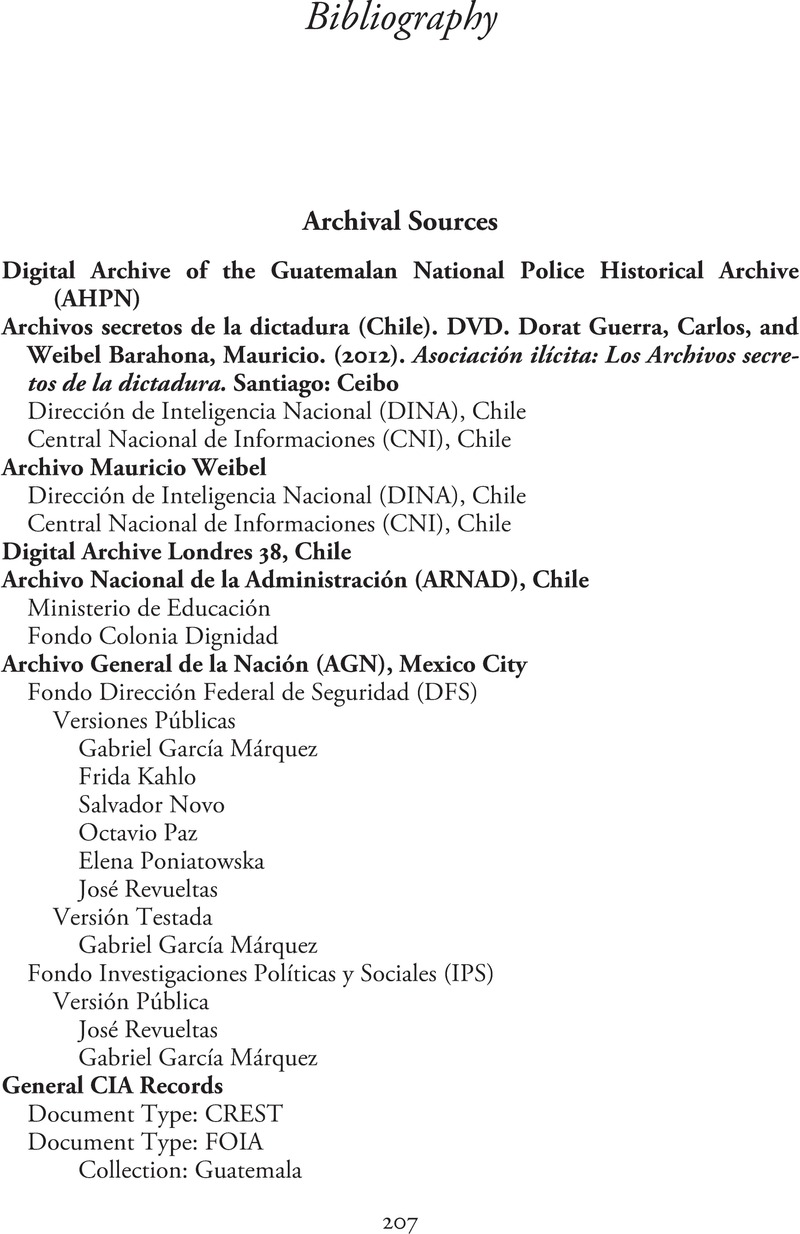Book contents
- Surveillance, the Cold War, and Latin American Literature
- Surveillance, the Cold War, and Latin American Literature
- Copyright page
- Dedication
- Contents
- Figures
- Preface
- Acknowledgments
- Chapter 1 Seeing It All
- Chapter 2 Latin American Archives and Human Matter
- Chapter 3 Cultural Cold War
- Chapter 4 Spying and Knowledge
- Chapter 5 Reading Like a Spy
- Chapter 6 Writing Like a Spy
- Chapter 7 Spying Like a Writer
- Conclusion
- Notes
- Bibliography
- Index
- References
Bibliography
Published online by Cambridge University Press: 18 August 2022
- Surveillance, the Cold War, and Latin American Literature
- Surveillance, the Cold War, and Latin American Literature
- Copyright page
- Dedication
- Contents
- Figures
- Preface
- Acknowledgments
- Chapter 1 Seeing It All
- Chapter 2 Latin American Archives and Human Matter
- Chapter 3 Cultural Cold War
- Chapter 4 Spying and Knowledge
- Chapter 5 Reading Like a Spy
- Chapter 6 Writing Like a Spy
- Chapter 7 Spying Like a Writer
- Conclusion
- Notes
- Bibliography
- Index
- References
Summary

- Type
- Chapter
- Information
- Surveillance, the Cold War, and Latin American Literature , pp. 207 - 223Publisher: Cambridge University PressPrint publication year: 2022



